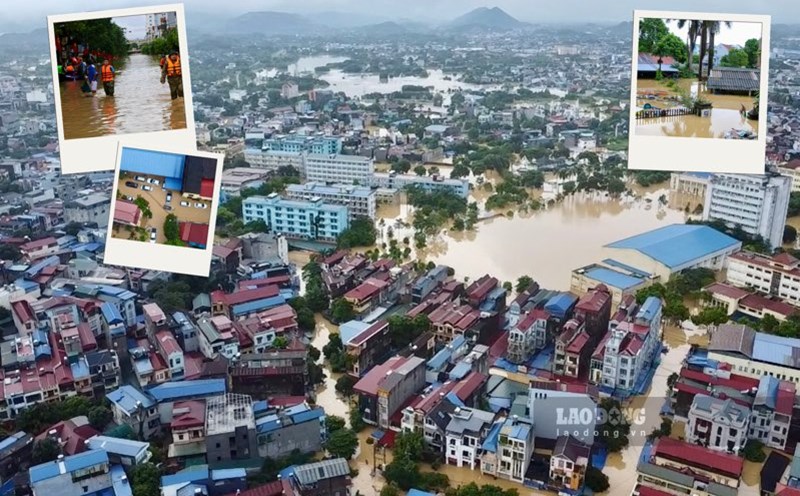There are jobs, but there are no... houses in Da Nang
Mr. Nguyen Thanh Quang - an officer who has just moved from the old Quang Nam to Da Nang to work - brought his savings and expected to find an apartment of about 1.8 - 2.2 billion VND to settle down. After many weeks of going to see the house, the answers he received from the brokers were mainly A-class, luxury projects on the Han River, along the coast or right in the center - with prices "exceeding" his ability to pay.
"There is a job, but there is no... house in Da Nang" - he sighed, having to continue renting a room, waiting for a low-end project to appear.
In 2024-2025, the Da Nang apartment market recorded a wave of project restart. The Department of Construction continuously announces a list of conditions for opening for sale, removes many legal bottlenecks, and clears the supply that has been " suppressed" for a long time. Notably, there are the High-rise Apartment Complex in the New Town Sports - Service Urban Area (Ngu Hanh Son) with more than 1,700 apartments; Olalani Riverside Towers on the Han River with more than 1,400 apartments; The Sang Residence handed over more than 400 apartments in the year; Some central projects such as Bac Cuong Tower with a scale of more than 100 apartments... At the scale of the project, Lang Van has an area of over 500 hectares, a total capital of nearly 44,000 billion VND after being allowed to mobilize nearly 17,000 billion VND for housing items, promising to create a strong increase.
But that bright color painting exposes a "dark side": The product structure leans strongly towards high-end.
According to Mr. Vo Hong Thang - Deputy General Director of DKRA Group, the high-end and luxury segment currently accounts for 78% of the total supply of apartments, while the mid-range line - which serves the real housing needs of local residents - is limited. Buyers from Hanoi and Ho Chi Minh City dominate and focus on class A, luxury for investment. On the contrary, the majority of Da Nang residents are looking for mid-range apartments to live in but are having difficulty accessing them because... there are not enough goods to meet their needs.
Selling prices exceed real housing needs
According to market research units, in just 1 year, the primary price of apartments in Da Nang increased by about 27%. The group of projects opened for sale from 2024 to present has recorded prices from 65 million VND/m2; projects along the Han River have reached 130 - 200 million VND/m2. In the central area, many projects are anchored at 80 - 100 million VND/m2; riverside coordinates developed by big brands are up to 150 - 170 million VND/m2.
A field survey shows that a project in the Hoa Xuan bridge area (Cam Le) is being advertised for about 3 billion VND/unit of 45m2 (equivalent to more than 66 million VND/m2); a 58m2 apartment costs 3.2 billion VND (more than 55 million VND/m2). In Son Tra, a 62m2 apartment is advertised for 4.1 billion VND (more than 65 million VND/m2), a 70 m2 apartment is about 4.8 billion VND (more than 68 million VND/m2). With the income level of the majority of cadres, civil servants and workers in Da Nang, this is a price that "exceeds" the price cap, although the liquidity of the whole market is still maintained by cash flow from foreign investors.
Unlike the previous cycle, this boom has seen Da Nang boost social housing. According to the housing development program 2021 - 2030, the city has planned 69 areas, 15 areas are being implemented. Some projects such as An Trung 2, Hoa Khanh Industrial Park Workers' Apartment Building and areas in Cam Le and Ngu Hanh Son are speeding up progress. This is a positive signal, but if we compare it with the huge real housing demand - especially of young workers and civil servants - there is still a long way to go to "fill the void" of mid-range products.
Liquidity in the Da Nang real estate market in the first 7 months of 2025 increased by more than 50% over the same period, supply increased by 43% (more than 2,000 units), reflecting the return of investment demand. However, Mr. Thang said that the current increase is largely based on high-end and luxury products. If we do not soon supplement mid-range goods, the risk of local supply surplus in the high-end segment is real, especially when the cost of land, materials, and finance is high, making it difficult for selling prices to adjust down. In the medium and long term, competitive pressure may force many projects to increase discounts and incentives - a way of "soft price reduction" - to stimulate demand.
Experts say that the presence of large corporations has raised urban development standards, creating a synchronous service - education - healthcare complex. However, to keep the market sustainable, the policy must "pull" the mid-range segment back to the "market heart".












